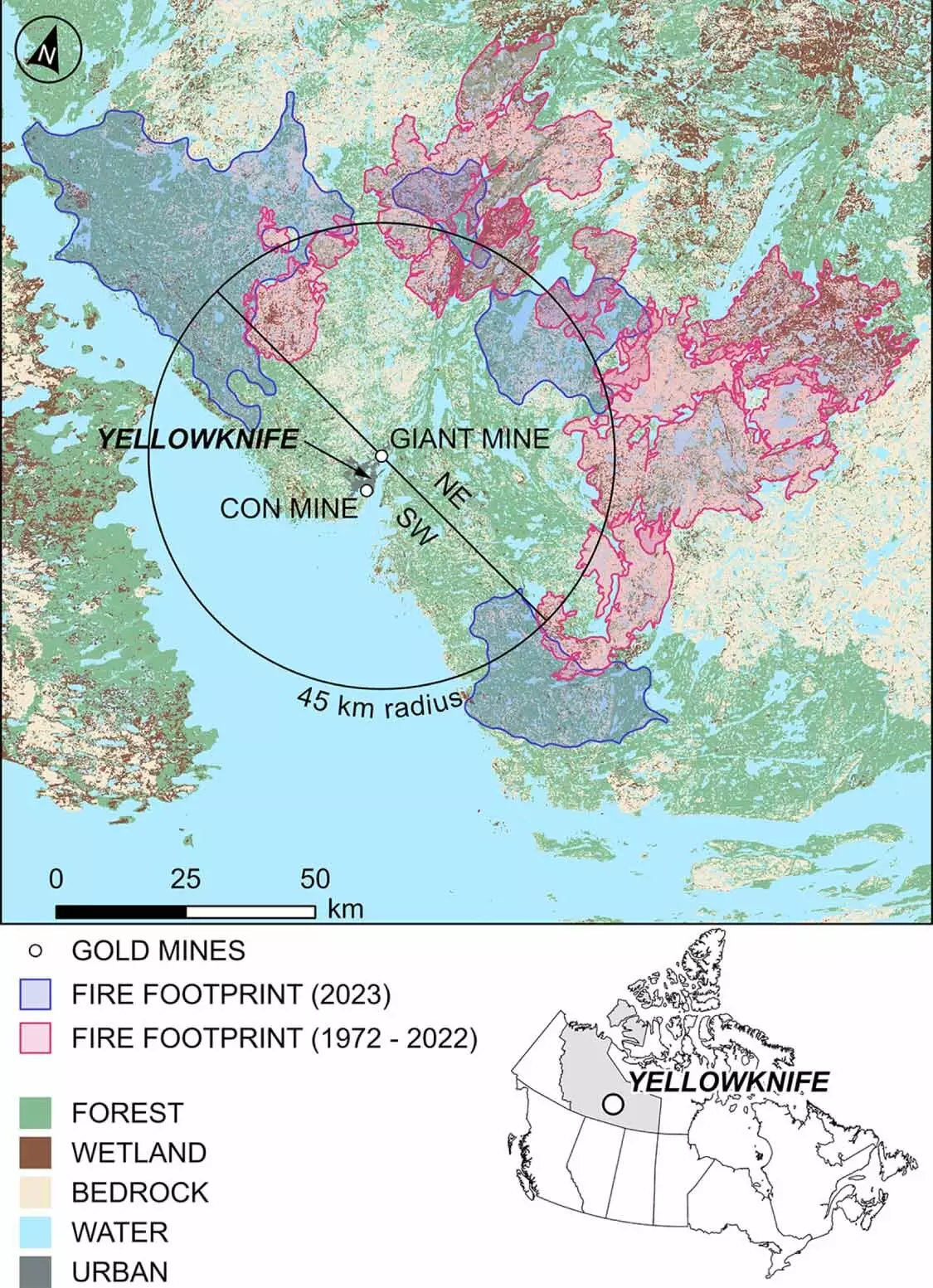In the pantheon of environmental calamities, the wildfire season of 2023 stands out as a cataclysm that has left an indelible mark on Canada. Not only was this year noted for the sheer scale of destruction wrought by fires, but research has revealed it unleashed a toxic legacy that may have long-term implications for both human health and ecological stability. A study conducted by a collaboration of researchers from the University of Waterloo and Nipissing University has uncovered that an alarming portion of these wildfires—specifically in areas already affected by mining activities—could have released staggering amounts of arsenic into the environment.
While the notion of wildfires contributing to air pollution is not new, the findings that approximately 69 to 183 tonnes of arsenic may have been emitted from just four wildfires around Yellowknife are both shocking and deeply alarming. This is not merely a statistical anomaly; it represents a tangible risk that could put myriad communities on a perilous precipice, as threats of cancer, cardiovascular diseases, and other toxic consequences loom on the horizon.
Arsenic: A Silent Menace
Arsenic, a highly toxic element, is not something most people actively think about on a day-to-day basis. However, its insidious presence in contaminated environments can lead to grave health consequences. The World Health Organization warns that arsenic exposure is linked to several serious health issues, including diabetes and infant mortality. The research reveals an alarming twist: wildfires can act as the catalyst for releasing this harmful contaminant, flipping the narrative from invisible threat to overt danger.
What is particularly disconcerting is the researchers’ assertion that Canada is merely the tip of the iceberg. Similar sites, ravaged by industrial contamination worldwide, are also at significant risk as wildfire seasons grow more intense due to climate change. As temperatures rise and conditions become increasingly conducive to wildfires, the likelihood of toxic substances being released from contaminated soils escalates, posing a clear and present danger to areas previously regarded as safe.
A Call to Action: Collaborative Responses Are Necessary
The findings of this research urge more than just awareness; they scream for action. Dr. Owen Sutton’s assertion regarding Yellowknife’s need for scrutiny is particularly salient. This city’s longstanding history of mining has left a toxic legacy, but it is merely a microcosm of a broader, more troubling trend across Canada. The research calls for a multidisciplinary approach—from wildfire science to environmental policy-making—suggesting that we need an urgent collaborative investigation to tackle the impending public health crisis.
However, it goes beyond merely discussing the problems; there is also an implicit acknowledgment of solutions. Integrating Indigenous fire stewardship with scientific approaches to fire management could serve as a powerful means to mitigate the dangers posed by wildfires. Indigenous communities have long understood their ecosystems, and their knowledge could prove invaluable in developing selective burning techniques aimed at controlling fire behavior and protecting vital ecosystems.
Looking Ahead: The Impact of Climate Change
As the specter of climate change looms larger every year, the interaction between industrial contamination and natural disasters demands urgent attention. The research underscores the looming threat that future wildfires pose to human and environmental health. The study’s focus on wetlands as critical hotspots for toxic release is particularly haunting; these areas often serve dual purposes as vital ecosystems and, unfortunately, repositories for pollutants.
The researchers aim to broaden their scope by investigating other toxic metals stored within affected landscapes. As science develops a clearer understanding of the consequences of wildfires amidst climate change, the call for adaptive land management becomes more critical. The fire management strategies adopted must incorporate ecological perspectives and actively seek to lessen the likelihood of devastating releases of heavy metals into the environment.
In increasingly volatile climate conditions, we find ourselves at a crossroads. The need to confront the intersection of wildfires, mining legacies, and public health has never been more pressing. We are at a moment of unprecedented potential to not only raise awareness but implement actionable solutions at an urgent pace.


Leave a Reply